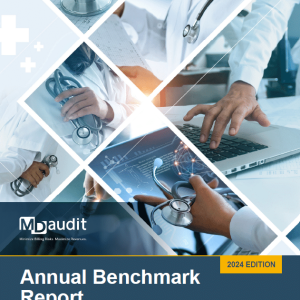Telemedicine has carved out a critical niche within the response to COVID-19. Having been green-lighted for reimbursement by the Centers for Medicare & Medicaid Services (CMS) and boosted by the relaxation of some HIPAA privacy requirements, telehealth models are not only advancing at lightning speed, but are also proving to be a game changer for continuity of care.
When it comes to reimbursement for telehealth services, however, getting paid hinges upon documentation quality. To put it broadly, providers must make sure they are documenting everything they do during the patient’s telehealth visit, from the objective of the visit to the assessment to any virtual examination or evaluation of the patient. But perhaps the most important thing that must be reflected in the documentation is the thought process of what is being monitored, what is being ruled out and what is worth a follow up.
I recently shared insights on the challenges around documentation for proper telehealth reimbursement as part of a For the Record article, Chart Conundrums: Telemedicine — Health Care’s New Documentation Paradigm. Here, I expand on the information shared.
Claims to watch
While it’s true that CMS has lifted many restrictions and made it easier for providers to submit telehealth claims, it is still not as simple as has been indicated in several states. Nor it is uniform across the board. As such, healthcare organizations must make sure that they monitor and trace the behavior of their telehealth claims: Were they paid and at the right rate, or were they denied and why? Importantly, was the reason for any denial based on the regulations before CMS’s policy simplification, or was it denied because the claim was not submitted with proper codes, modifiers, etc.?
Revenue integrity teams should closely monitor claims that have not been adjudicated. In the best-case scenario, the insurance carrier will respond either with payment or a rejection within 30 days of submission. However, if months pass with no communication, it is because either the third-party carrier is confused about the new rules and regulations, or they are having trouble updating them in their software systems. Or, in some cases, it may be due to a lack of bandwidth to process telehealth claims.
What it comes down to is this: Regardless of why adjudication is delayed, the older a claim gets, the lower the chances are that they will be paid at all.
Thus, it is important to monitor claims and to make sure reimbursement is correct. Providers should assess any denials to determine if they are doing something wrong or if the third-party carrier is not following the rules and incorrectly rejecting a claim. Most importantly, healthcare organizations should monitor any delay in adjudication or communications from the carriers about the status of the claims.
Systems and best practices
Right now, there is a tremendous shift in what revenue departments are paying attention to. In addition to their normal responsibilities, revenue cycle and compliance teams are also being asked to monitor COVID-19 cases. So the best practice is to increase bandwidth in key areas within the revenue cycle continuum – specifically in the coding department.
Coders need to be well-trained to identify errors on documentation that is submitted by the clinicians—the rate of which was high to begin with. Now, new ICD 10 codes, new testing codes and new telehealth codes are all creating confusion for clinicians who do not have time to be trained, updated and adjust practices appropriately because they are busy saving lives. The burden should be transferred to coders to make sure every single encounter is coded. If there are any questions or uncertainty, that chart should be parked until they find a good time to communicate back to the clinician and receive the right information.
Another best practice is to increase the bandwidth within key coding and auditing departments by reassigning staff from areas where services have been reduced because of COVID-19. For example, when elective surgeries were paused, strategically placing employees assigned to those function into key areas of coding and auditing was a smart tactic. The back end can also be reallocated, for example people within patient financial services whose day-to-day scope has decreased like in the billing or prior authorization departments. Providers can make the most of limited resources by utilizing all available staff to increase bandwidth and aggressively monitor for appropriate payments or delays.
The third and, for me, the most important best practice is to take advantage of this challenge to level all the silos that exist within the revenue cycle continuum and between revenue cycle and clinical personnel. This is the chance for communication to increase about many of the trends that are being noticed, such as reasons for denial. If the errors are coding, then go back to the coders with internal communication training, mitigation of the root cause of the denials, etc.
What lies ahead
How telehealth expands in the coming years all depends on how third-party carriers, including CMS, behave when it comes to processing claims and, when it comes to accurate payments, the amount of additional work it generates in revenue cycle departments and for clinicians. Yes, there has been an attempt to simplify telehealth reimbursement, but it remains confusing and very liquid because there continue to be changes.
One thing that I expect, when it comes to things like communicable diseases, new viruses, next wave of COVID-19, or even the common flu or cold season, is that providers will request to utilize telemedicine and telemedicine technology to evaluate these patients and avoid transmission to others. What I don’t expect to see is telemedicine being utilized for patient conditions that require a hands-on physical examination. It’s very difficult to replace the stethoscope with Skype.








